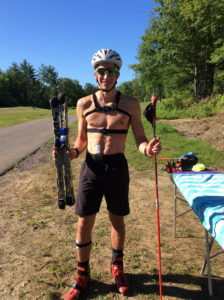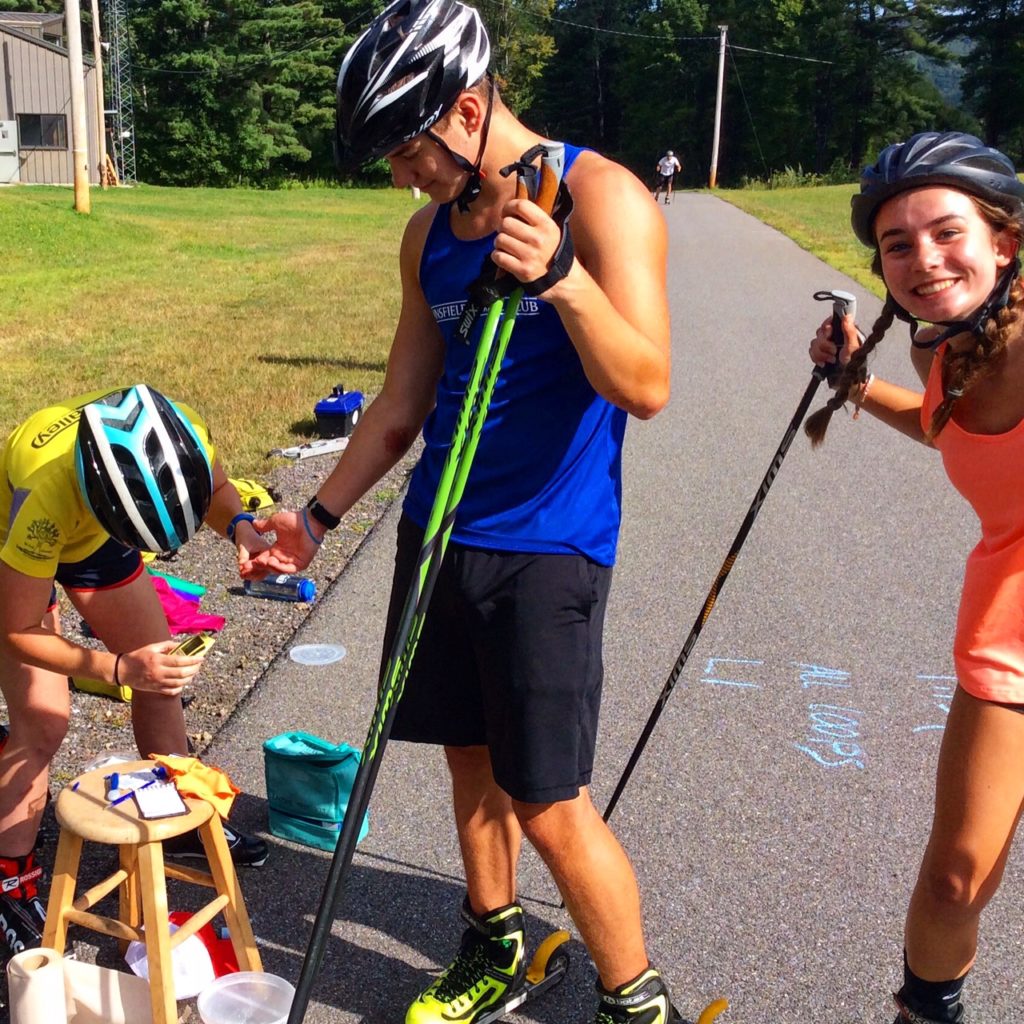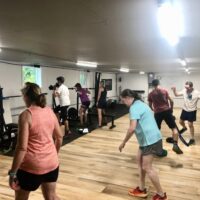With a long stretch of training ahead, now is a good time to take steps to improve your daily work and sessions. A lot of us skiers know that there is benefit from taking it easy on some days, and working hard on others. Sometimes, easy work done for a long enough time provides good benefit…other days, hard work in a short session is the call.
How can you measure these workouts and be sure you are doing the right thing, at the right time? One of the best measurements is your heart rate, which can guide everything from your workouts themselves to the recovery you’re getting when you AREN’T on your feet.
Heart rate monitors vary from the inexpensive and simple to state-of-the-art computers packed with power right on your wrist. But you don’t need to spend hundreds to get a lot of benefit. There are plenty of interesting articles out there to guide training and learning…I’ll link two relevant ones below:
Light reading: Fasterskier article (summer 2019)
Dense reading: Marit Bjoergen’s training history (scholarly article)
How do we utilize Heart Rate monitors with the club? We generally group training into 5 different “zones” or “level”, the most common way for skiers to simplify this stuff. I’ll list the theoretical percentages of max HR (more on how to determine that later) as well as examples of what that pace looks like among our Juniors.
“Norwegian” Level 1, 50-60% of max HR: Generally the pace we use on a very relaxed recovery day or session, such as an afternoon jog at training camp after a morning that included a hard workout. Any uphill is walked. Termed this because of tales from an international training camp where “on easy day’s the Norwegians shuffled along and went super slow, but on the interval days they kicked everyone’s a@$.”
Level 1 60% of Max HR: Easy pace training, some hills may be walked on steep trails (such as the singletrack at Cochran’s) while other gradual hills like those you may find on dirt roads would still be in a run. I like to have this 60% be the average for the workout, meaning in some cases you would be above level 1, especially on rollerskis and ESPECIALLY on classic skis where it’s important to go quick enough to maintain good technique.
Level 2 75% of Max HR: Best way to describe this is either when you are feeling a bit “in the zone” on an L1 day and pick things up naturally, or when people begin to jockey for position and show some edge or advantage in what should be an easy workout. Funny enough this always seems

Skiing science subject Will Solow
to occur at REG camp and NEG camp where athletes from opposing clubs end up training together…who would’ve thought? At MNC practices this will usually lead to someone either yelling “Pace-Police!” to encourage a slowdown, or simply going to the front and slowing the pace oneself (therefore literally becoming the Pace-Police Officer)
Level 3 80-90% of Max HR: Best suited to longer intervals on terrain that is gradual. One of our keystone workouts in the summer is Road 101 in Smuggler’s Notch. The interval itself is about 20 minutes in length, with the last 4-5 minutes being steep enough to become L4. However, the road starts with long gradual sections that can be skied with good control. This is the type of workout, whether running or skiing or biking, where you feel like a “hero” because your technique can hold together. However you are on or just below the Anaerobic Threshold where your body starts to rely on stored sugar and lactic acid begins to be produced faster than your body can remove it naturally…inte
rvals and work of this type helps you can a lot of efficiency by training your body to handle greater and greater levels of effort and oxygen consumption.
Level 4 90-95% of Max HR: An effort of hard work that can range from 2-15 minutes in length, sometimes shorter. If you have ever competed in a 5km race, much of that time will be at level 4 with the exception of descents and (if you are on skis) flat and fast terrain. Quintessential L4 workouts are 4-5×4 minutes uphill running, or 6-8×2 minutes rollerskiing. We are also a bit fan of 30/30 workouts (30 seconds on, 30 seconds off) at Level 4, where your body gradually loses the ability to clear the lactic acid produced within the allotted 30 second recovery window. This type of training helps top speed, efficiency, mental strength, and pacing.
Level 5 95-100% of Max HR: Pretty tough to sustain…this is reserved for sprints and speeds! Think the final 100m or a race, or alternatively a 200m effort on a track. This helps work on speed-of-movement and fast-twitch recruitment. Also, head-to-head this type of effort is usually very fun!
How do I know my max HR?
There are a lot of tests out there, as well as simple rules like “220 minus your age” which has been around for a long time. In our world, without access to serious testing facilities and oxygen-uptake measurements, there are a few ways I’d suggest going about this:
- Uphill run test. Luckily we have an option for one coming right up! However this can be done whenever you choose. Ideally this will be a test of most (if not all) uphill terrain for 11-18 minutes. In some cases going longer than this means your body will pace naturally into a more controlled effort. However, it’s highly likely that sometime during an uphill run test you will be at least within a few ticks of your max HR. If your monitor tells you your “max” for that workout (most all should) use this info!
- 2min repeats. Alternative to an uphill run test, 2 minute hard intervals up a hill are great. Recovery time is just the trip back down, and using poles will both be more ski specific AND create more effort from the whole body than running alone.

Lactate testing: another way to measure effort and the subject for next time!








